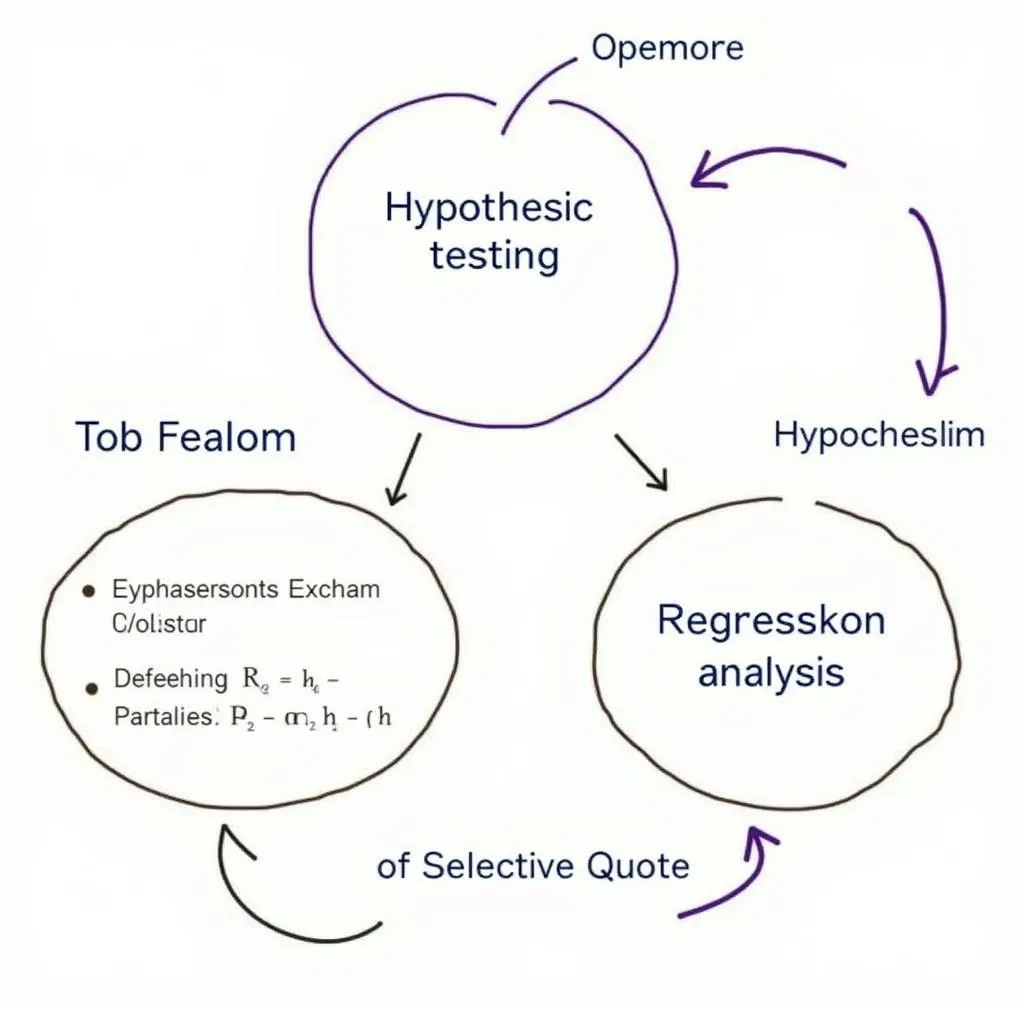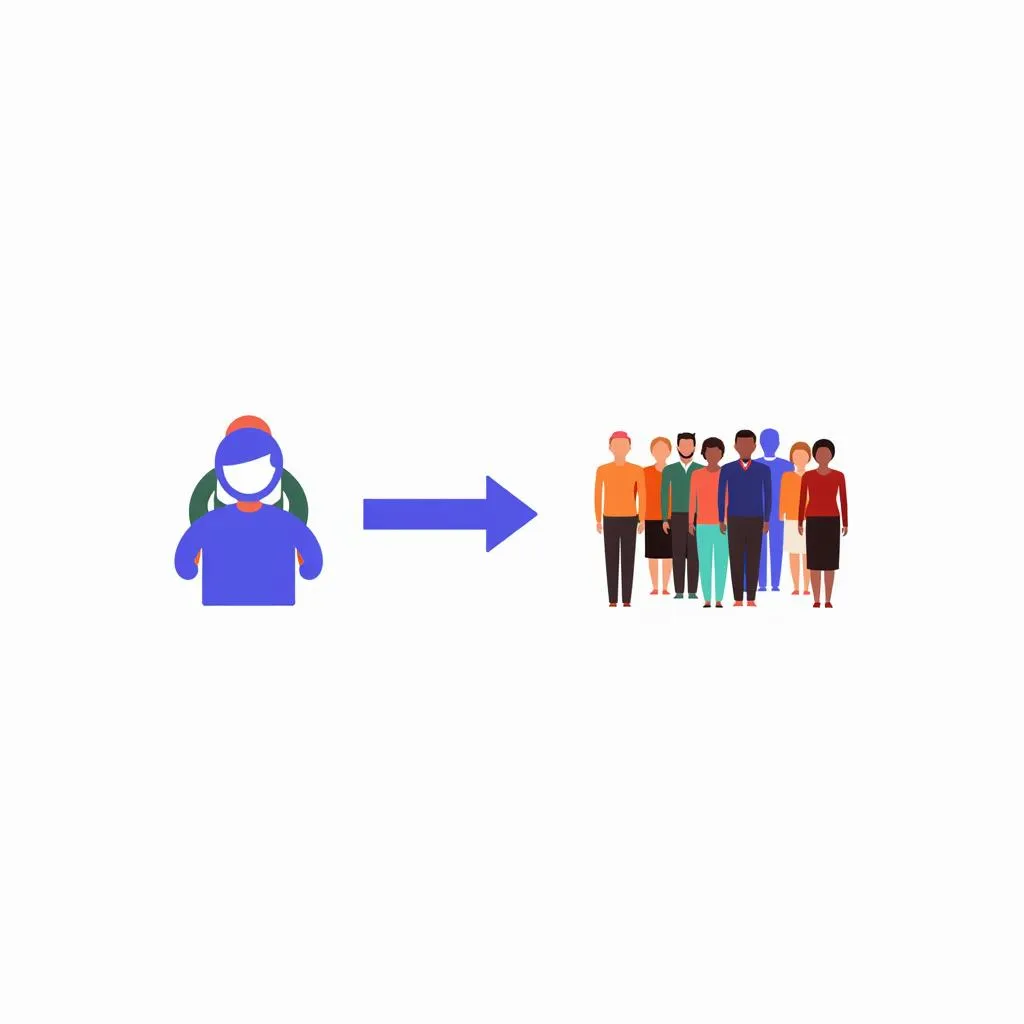When we talk about research, especially in fields like paranormal investigation where concrete evidence can be elusive, understanding data is key. That’s where inferential statistics come into play. This powerful tool allows researchers to go beyond simply describing what they observe and delve into a realm of drawing conclusions, making predictions, and ultimately, gaining a deeper understanding of the phenomena they study. But what exactly does that mean, and how does it work? Let’s shed some light on this essential aspect of research.
Unlocking the Power of Inference: Going Beyond the Obvious
Imagine you’re investigating a supposedly haunted location. You’ve collected countless hours of audio recordings, hoping to capture EVPs (Electronic Voice Phenomena). Simply listening to these recordings and noting instances of potential EVPs provides a basic level of observation. However, inferential statistics empower you to analyze this data, identify patterns, and draw conclusions that go beyond simply saying, “We heard a strange noise.”
 Inferential Statistics Chart
Inferential Statistics Chart
For instance, you could use statistical techniques to compare the number of potential EVPs captured during different times of day, under varying environmental conditions, or even in the presence of different individuals. By analyzing these relationships, you can start to formulate hypotheses about what factors might be influencing the frequency or characteristics of the phenomena you’re observing.
From Sample to Population: Making Predictions About the Unknown
One of the most crucial aspects of inferential statistics is its ability to extrapolate findings from a smaller sample to a larger population. This is particularly relevant in paranormal research, where studying every single haunted house or every potential psychic is practically impossible.
Let’s say you’re researching the effectiveness of a particular psychic ability. You conduct a study with a group of 20 participants and find statistically significant evidence suggesting their abilities are genuine. While this is a significant finding, it’s essential to understand that inferential statistics allow you to make broader inferences. You can use the data from your study to estimate the prevalence of this psychic ability within a larger population, such as all individuals who claim to possess it.
 Sample to Population Research
Sample to Population Research
“Inferential statistics are like bridges connecting the islands of our observations to the vast continent of understanding,” explains Dr. Emily Carter, a leading researcher in parapsychology. “They provide a framework for drawing meaningful conclusions that extend far beyond the limitations of our data sets.”
Testing Hypotheses and Unveiling the Truth Behind Anomalies
At the heart of inferential statistics lies the concept of hypothesis testing. In simple terms, this involves formulating a specific, testable prediction about the phenomenon you’re investigating and then using statistical analysis to determine the likelihood that your prediction is accurate.
For example, you might hypothesize that electromagnetic fluctuations influence the likelihood of experiencing paranormal activity. To test this, you would need to collect data on both electromagnetic readings and reported paranormal experiences at various locations. Inferential statistics would then allow you to analyze the correlation between these two variables and determine whether the evidence supports or refutes your initial hypothesis.
Navigating Uncertainty: Embracing Probability in Paranormal Research
It’s crucial to remember that inferential statistics deal with probabilities, not absolutes. This means that even the most robust statistical analysis can’t provide definitive proof or disprove the existence of a paranormal phenomenon. Instead, it offers a framework for quantifying uncertainty and making informed judgments based on the available data.
Think of it like this: if you flip a coin ten times and get heads eight times, you might suspect the coin is biased. However, inferential statistics allow you to calculate the probability of obtaining such a result by chance alone. If that probability is extremely low, it strengthens the case for a biased coin, but it doesn’t completely rule out the possibility of random chance.
Conclusion: A Vital Tool for Unveiling the Paranormal
In the ever-evolving landscape of paranormal research, inferential statistics provide a crucial tool for navigating the complexities of data analysis and drawing meaningful conclusions. By embracing the principles of inference, hypothesis testing, and probability, researchers can move beyond subjective interpretations and contribute to a more rigorous and scientifically grounded understanding of the unexplained. While inferential statistics may not definitively answer every question, they undoubtedly equip us with the tools to ask better ones, refine our hypotheses, and ultimately, push the boundaries of our knowledge about the paranormal world.
FAQ: Common Questions About Inferential Statistics
- What’s the difference between descriptive and inferential statistics? Descriptive statistics summarize data, while inferential statistics use data to make predictions and generalizations.
- What are some common types of inferential statistics used in Paranormal Research? These include t-tests, ANOVA, correlation analysis, and regression analysis.
- Do I need a strong background in mathematics to understand inferential statistics? While a basic understanding of math is helpful, there are many resources available to help researchers grasp the fundamental concepts.
Need Help with Your Paranormal Research?
Our team of experienced paranormal investigators is here to assist you. Contact us at:
Phone: 0904826292
Email: [email protected]
Address: No. 31, Alley 142/7, P. Phú Viên, Bồ Đề, Long Biên, Hà Nội, Việt Nam
We offer 24/7 support and guidance to help you unlock the mysteries of the unknown.